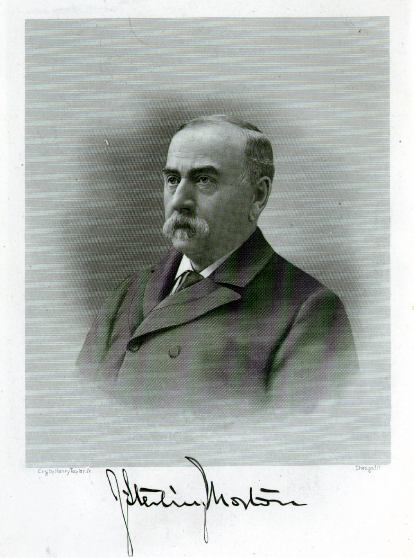
|
|
|
HISTORY OF NEBRASKA
J. STERLING MORTON AND ALBERT WATKINS, PH.B., LL.B.
A REVISED EDITION
EDITED AND REVISED BY
JUDGE IN THE DISTRICT COURT OF NEBRASKA, ASSOCIATE EDITOR
WESTERN PUBLISHING AND ENGRAVING COMPANY, |
|
COPYRIGHT, 1918
|
|
DEDICATED To the memory of the strong men and noble women who dared the dangers and endured the hardships of pioneer life in the "Great American Desert"; who first plowed and planted these Plains, who here first built and consecrated homes, and who laid the foundations of an enduring civilization. |
|
A STATEMENT BY THE PUBLISHERS The publishers take pleasure in
presenting to the people of the state and of the country
this History of Nebraska. While it is the history prepared
by Sterling Morton and Albert Watkins, it is much more. It
is a careful and a thoughtful revision of their edition
which was completed in 19 11 and 1913. |
of the oppressed and in answer to the call of humanity. It is the purpose of the publishers, when the war is over, to present to the public a volume giving Nebraska's record in the great war. Enough has been done during the fourteen or fifteen months since the United States declared a state of war exists and took her place with the allied nations, to assure us that Nebraska's record will be worthy of the great cause in which we are engaged and of the loyalty and patriotism of a free, intelligent, and independent people. WESTERN PUBLISHING AND ENGRAVING COMPANY. LINCOLN,
NEBRASKA,
JULY, 1918 |
|
INTRODUCTION Two or three statements may aid us, in
appreciation of history in general, and more particularly
they may help to show the value, for all citizens, of local
and state history. They will enable us to understand and to
realize that he lives the best and most useful life, both
for himself and for all with whom he is in any way
connected, who lives in the present, who makes a wise use of
all the past, and who provides, as far as possible for the
future. |
of the first semi-centennial period. This is the case
because the trend of growth and development was determined
in part by the physical features upon which the social,
economic, political, educational, and religious forces have
acted and reacted. Had they been different the history of
those who came to build an enduring civilization would have
been different. The divine hand through nature's forces and
laws laid the foundations of a commonwealth and the builders
have erected a structure worthy of themselves, of the
opportunities which were theirs, and of the physical
conditions into which they came. J. A. BEATTIE. LINCOLN,
JULY, 1918. |
 Feb 2000 |
 |
 |
© 1999, 2000, 2001 for the NEGenWeb Project by Pam Rietsch, Ted & Carole Miller.

